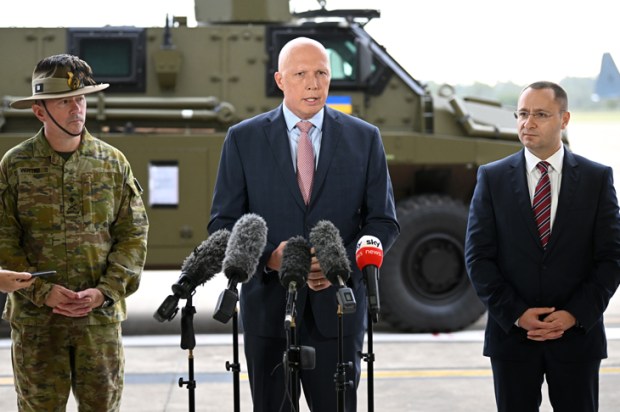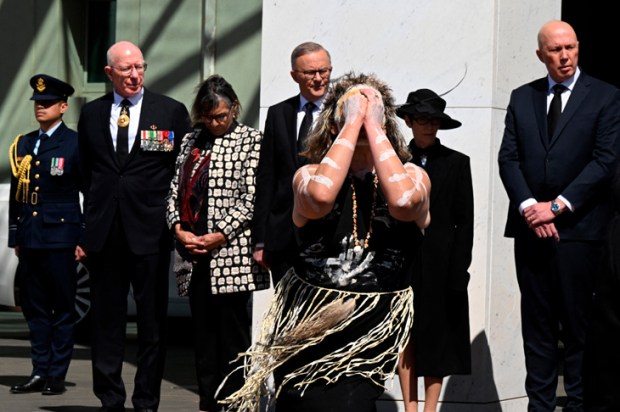The death last week of Mikhail Gorbachev was an apt precursor to the Jobs and Skills Summit, Australia’s attempt at perestroika. Representatives of Big Australia: big government, big business, big labour, big academia and big industry associations gathered in Canberra in a demonstration of central planning with Australian characteristics. It remains an unsettling reflection of the Commonwealth government’s extensive role in the lives and jobs of all Australians that such a summit can attract so many.
The last time such a summit was held was some 40 years ago when Australia was a different place with a different economy facing different challenges. Today however, Australia is a greatly changed nation and home to a much larger, more complicated, and more dynamic economy in a much more globally integrated and volatile world.
At the conclusion of the summit, Prime Minister Albanese announced eight summit outcomes which were a mix of spending commitments, industrial relations, regulation changes and immigration policy enhancements. But in the spirit of Upton Sinclair, who said ‘It is difficult to get a man to understand something when his salary depends upon his not understanding it’, the economic elephants in the room were ignored.
According to ABS data, total expenses of Australian governments, commonwealth, state and local, increased 34 per cent from $722 billion in 2018 to $969 billion in 2021. Meanwhile, the Australian economy grew a measly four per cent over the same period. It should not surprise that cumulative government deficits over this period summed to $281 billion, or approximately $70 billion per year. In the ten years to June 2021, total Australian government debt near tripled from 13.1 per cent of GDP to 38.1 per cent of GDP.
Also, according to ABS data, the number of public sector employees across the three levels of Australian government was 2.1 million at June 2021. This number does not include those whose jobs exist because of government. For example, the extensive network of service providers to government and the batteries of compliance officers embedded within businesses, and the accountants, lawyers and consultants who support them. Out of a total workforce of 13.2 million, this translates into approximately one out of every six employed people in Australia working for government.
A relevant consideration in Australia experiencing a labour and skills shortage is the 20-year project to expand Australian government and to reregulate the economy. Economic reform seemed to end in 2001 and has since moved into reverse. Australia’s slowing economy is the price of too much of Australia’s productive human and financial resources not being employed for production.
When summits such as the Jobs and Skills Summit are staged, it is normal for most attention to be given to those in the room. But equal, if not greater attention should be given to those not present. As Maritime Union leader Christy Cain noted at the summit, ‘If you’re not at the table, you’re part of the menu.’ Given the most notable non-represented attendees were the young and yet to be born, it should not surprise that it will be the next generation who will pay the greatest price of a slow-growing, less dynamic and more tightly managed economy. This on top of declining educational outcomes they will experience.
Flowing from the summit, the stage is also being set for a re-energised debate about repealing the stage three tax cuts to fund the growing spending commitments of governments.
The stage three tax cuts were legislated as part of the 2019 budget. As a matter of accuracy, the stage three tax cuts are not exactly a tax cut. They are a partial return of bracket creep. Bracket creep is the silent tax increase applied when workers move up tax brackets following pay rises. In most cases, these pay increases don’t necessarily reflect increased purchasing power because they are compensation for inflation.
In 1975, Malcolm Fraser promised to introduce tax bracket indexation on the grounds that, ‘It will make government more honest with your money. They (government) will no longer be able to rely on the secret tax increase of inflation.’ Fraser introduced indexation in 1976, but it was abandoned by 1982. Why was it abandoned? Possibly because government does not really want to be honest with taxpayers’ money as it is politically advantageous to quietly tax and then claim credit for returning funds through tax cuts or electoral pork.
The political argument being presented to repeal the stage three tax cuts is that they principally benefit the highest income-earners. Perhaps instead it is that high-income-earners might spend their income in unapproved ways.
Australia’s extensive middle-class welfare state is proficient in taking money from high income earners and returning it for approved spending (less an administration fee). There is no better example than the subsidies for childcare, including to the same high-income earners given the Labor government’s proposal to increase the subsidy cap to households earning up to $530,000 per annum.
Australia’s economy and our policy debates increasingly reflect the observation of Clive James that, ‘The problem with Australians is not that so many of them are descended from convicts, but that so many of them are descended from prison officers.’ Rather than liberate the Australian economy to achieve its full potential, Big Australia seeks to manage outcomes for its benefit and is then surprised when a complex 21st century economy does not respond the way their central plans suggest.
Got something to add? Join the discussion and comment below.
You might disagree with half of it, but you’ll enjoy reading all of it. Try your first month for free, then just $2 a week for the remainder of your first year.













